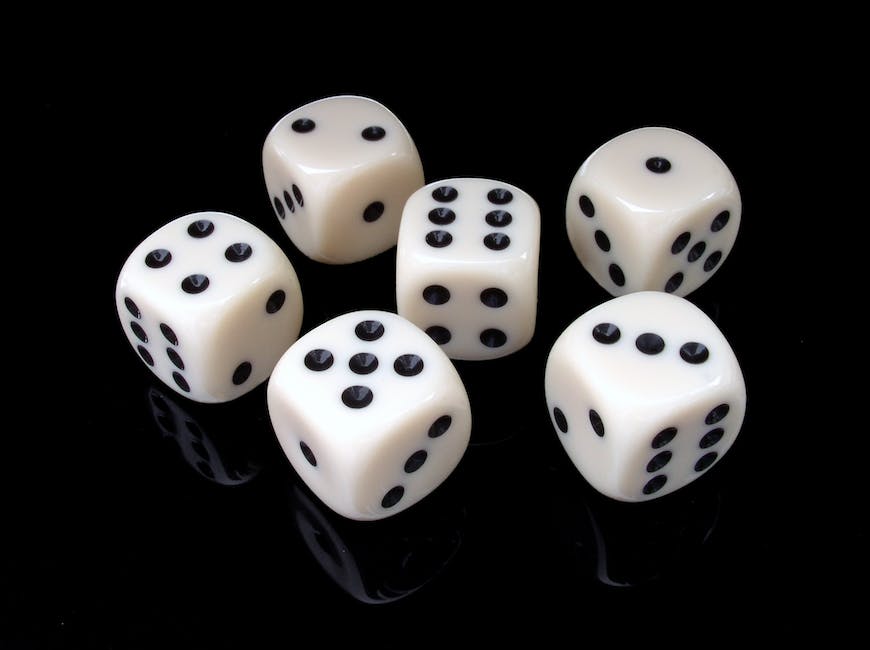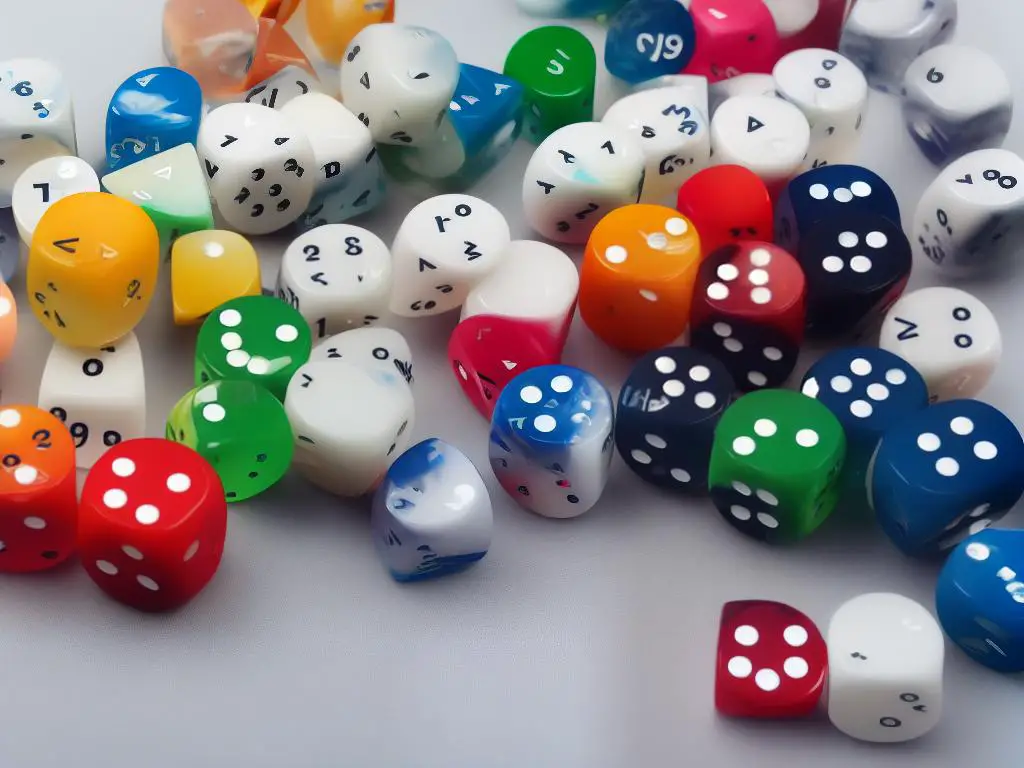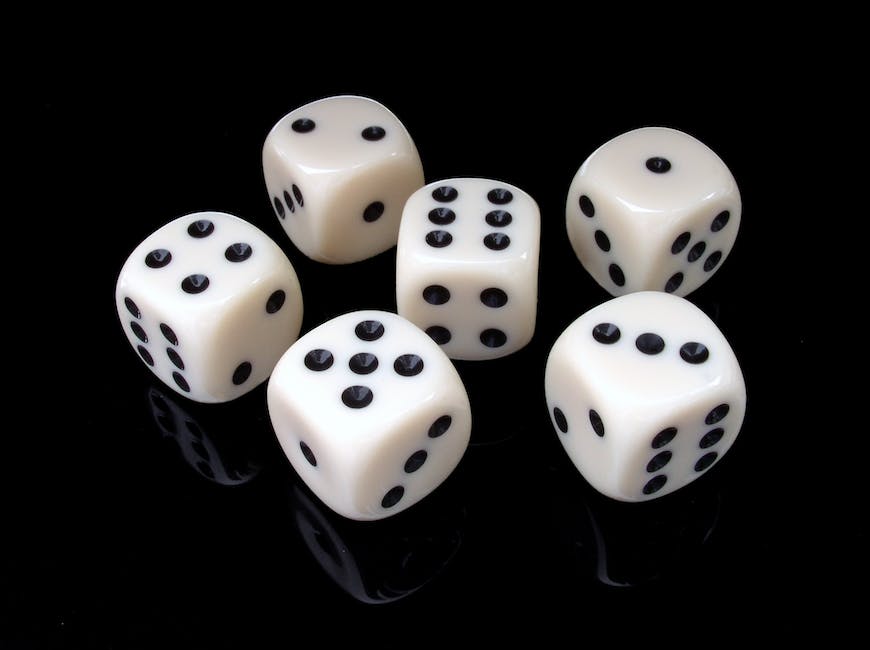Welcome to your ultimate guide to becoming a Yahtzee master! Whether you’re a beginner or an experienced player, there are always new tips and tricks to learn to improve your gameplay. This guide will cover everything from understanding the basics, utilizing probability, developing strategies for high scores, to enhancing your decision-making in the heat of the game, and much more. Let’s roll those dice and embark on this exciting journey to dominate the Yahtzee world!
This article contains Amazon affiliate links. I will earn a small fee if you use one of these links to make a purchase. It will not increase the price you have to pay!

Understanding Yahtzee Basics
Yahtzee is a classic dice game played with five dice and a scorecard. The objective of the game is to score the highest number of points by rolling certain combinations with the dice. Here are the basic rules of the game, along with scoring and turn mechanics to help you become a Yahtzee pro.
Understand the goal of Yahtzee:
The main goal of Yahtzee is to score the highest total points by rolling specific dice combinations outlined on the scorecard. Each player will take turns rolling the dice in an attempt to achieve these combinations.
Gather your materials:
To play Yahtzee, you’ll need five dice, a Yahtzee scorecard for each player, and a pen or pencil to record scores.
Familiarize yourself with the scorecard:
The Yahtzee scorecard is divided into two main sections – the upper section and the lower section. The upper section consists of the numbers one through six (aces, twos, threes, fours, fives, and sixes), while the lower section consists of specific dice combinations, such as three of a kind, four of a kind, full house, small straight, large straight, Yahtzee (five of a kind), and chance.
Learn the dice combinations:
To maximize your score, familiarize yourself with the different dice combinations and how they’re scored:
– Upper section: In this section, you score the sum of the dice that match the number indicated. For example, if you roll three 4’s, you would score 12 points in the 4’s box.
– Three of a Kind: In this combination, you need to have at least three dice with the same number. If you achieve this, you’ll score the total of all five dice.
– Four of a Kind: Similar to three of a kind, but with four matching dice. The score is also the total of all five dice.
– Full House: This combination requires three dice of one number and two of another. A full house scores 25 points.
– Small Straight: This is a sequence of four consecutive numbers, such as 1-2-3-4 or 2-3-4-5. A small straight scores 30 points.
– Large Straight: A sequence of five consecutive numbers, such as 1-2-3-4-5 or 2-3-4-5-6. A large straight scores 40 points.
– Yahtzee: Five dice with the same number. A Yahtzee initially scores 50 points, but if you roll more than one in a game, you can score additional Yahtzee bonuses.
– Chance: This combination allows you to score the total of all five dice, regardless of the numbers.
Learn the turn mechanics:
During each turn, a player can roll the dice up to three times to try to achieve a specific combination. After the first and second rolls, the player can decide to keep or re-roll any of the dice. Once the player is satisfied with their roll, or after the third roll, they will score the combination on their scorecard.
Develop a strategy:
Prioritize filling the upper section with the highest possible scores. If you reach a total of at least 63 points in the upper section, you’ll earn a bonus of 35 points. Utilize your three rolls wisely, aiming for more challenging combinations when you have better initial rolls.
Playing with others:
Yahtzee can be played with any number of players, and the game continues until every player has filled out their scorecard completely. The player with the highest total score wins.

Yahtzee Tips and Tricks: Importance of Probability
Understanding the role of probability in Yahtzee is vital as it helps you make informed decisions during gameplay, improving your chances of success. In this guide, we’ll discuss how probability calculations can enhance your decision-making during a Yahtzee game.
1. Familiarize yourself with the basics of probability
Probability is the measure of the likelihood of an event occurring. To comprehend probability in Yahtzee, start by recognizing that each die has six sides, and for each roll, there is an equal chance (1 in 6) for any of the numbers to appear. When rolling multiple dice, the probability of different combinations will differ. Familiarizing yourself with the basics of probability will allow you to make better decisions as you strategize and place your points throughout the game.
2. Evaluate probabilities to make informed decisions
In Yahtzee, you can re-roll the dice up to three times to improve your hand. By understanding the likelihood of getting what you want, you can more effectively strategize your rolls. For example, if you roll three-of-a-kind and are unsure whether to keep it or roll for a better hand (like a four-of-a-kind), you should assess the probability of getting the desired outcome. By making decisions based on the likelihood of an event happening, you can minimize risks and maximize your odds of achieving higher scores.
3. Learn about conditional probability
Conditional probability is the probability of an event occurring given that another event has already occurred. Understanding this concept will help you adjust your strategy based on the dice that you’ve already rolled. For instance, after your first roll, evaluate the odds of getting a specific outcome on your second and third rolls. Grasp the idea of conditional probability to make better decisions about your rolls and point allocation throughout the game.
4. Use probability to choose the best category to score
The Yahtzee scorecard has 13 categories, and each has a unique probability. For example, you have a higher chance of rolling three-of-a-kind than a full house, as there are more possible combinations to achieve it. Understanding the chances of scoring in different categories can help you determine where to allocate your points and influence your rolling strategy.
5. Opt for strategically beneficial outcomes
While it may be tempting to aim for high-scoring outcomes like a Yahtzee (five-of-a-kind), the chances of getting one are quite low. Instead, consider focusing on outcomes with higher odds, like three-of-a-kind or four-of-a-kind, to fill out your scorecard while still keeping your sights on more challenging combinations.
6. Practice and keep track of probabilities
The more you play, the more you’ll become familiar with the probabilities of different outcomes in the game. By learning from experience and understanding the odds, you can make smarter decisions during gameplay. Keep track of your probabilities while playing, either mentally or by using a cheat sheet, to spot patterns and make better moves.
example-short-description
example_image_description

Maximizing Scores with Upper Section Strategy
Yahtzee is a classic dice game that involves rolling five dice and trying to score the highest possible points by making certain combinations. While there is some element of luck in the game, there are also some tips and strategies that you can employ to increase your chances of scoring high, especially in the upper section of the scorecard.The upper section of the scorecard consists of six categories: Aces (1s), Twos (2s), Threes (3s), Fours (4s), Fives (5s), and Sixes (6s). Each category scores the sum of the respective numbers appearing on the dice. To qualify for the upper section bonus (an additional 35 points), you need to score at least 63 points in the upper section.
Here are some tips and tricks to help you maximize your scores in the upper section:
- 1. Target the high numbers first
- 2. Use all three rolls wisely
- 3. Don’t ignore the lower numbers
- 4. Know when to switch categories
- 5. Keep track of your progress
- 6. Don’t rush for the bonus
By following these tips and strategies, you’ll be well on your way to maximizing your scores in the upper section of the Yahtzee scorecard. Remember to be flexible, take advantage of opportunities in each roll, and keep an eye on your overall progress throughout the game. Happy rolling!

Understand the lower section rules and scoring:
Before diving into the strategies, familiarize yourself with the lower section of the Yahtzee scorecard. This section comprises six categories – 3 of a kind, 4 of a kind, Full House, Small Straight, Large Straight, and Yahtzee. These combinations reward different points, so being clear about their scoring is crucial.
Prioritize getting a Yahtzee:
A Yahtzee (five of the same number) earns you 50 points, which is the highest possible score for any category. To boost your scores, always strive for Yahtzee, and focus on keeping and rolling copies of the same number. However, remember that there is an element of luck involved.
Focus on scoring a Full House:
A Full House (three of one number and two of another) gives you 25 points. It is easier to achieve than a Yahtzee and still awards a decent amount of points. Keep an eye on the dice outcome, and if you have the potential to form a Full House, make it your priority.
Learn when to pursue the Small and Large Straights:
Both Small and Large Straights provide a sizable amount of points – 30 and 40, respectively. Small Straight is a sequence of 4 consecutive numbers, while Large Straight is a sequence of all 5 consecutive numbers. Be observant and identify these opportunities while rolling the dice. Commit to going for Straights when you are only one or two dice away from getting the sequence. If you are three dice away, it’s better to reroll and pursue a different goal.
Strategize your rerolls:
In Yahtzee, you have three rolls per turn to form the best combination. Strategically use your rerolls to maximize your chances of getting high scoring combinations. After your first roll, retain the desirable numbers or potential combinations and reroll the rest. In the second roll, fine-tune your choices by retaining the numbers complementing the existing combination and reroll the dice if necessary.
Manage your expectations:
While aiming for high scoring combinations, remember that the game depends on luck to a certain extent. Be adaptable and change your strategy when needed. If you see an opportunity for a high scoring combination, go for it – but if your luck isn’t in your favor, focus on completing other categories and building your overall score.

Developing Adaptability and Situational Awareness
Familiarize yourself with the basics: Before diving into tips and tricks, ensure you have a solid understanding of the game’s rules, scoring system, and objectives. Yahtzee is played with five dice, and the aim is to score points by rolling specific combinations. You get three turns per round to roll the dice and can choose to keep or re-roll any dice after each roll.
Strategize from the beginning: Before starting the game, develop a general strategy that will guide your decision-making throughout the game. This may involve focusing on high-scoring combinations, targeting specific categories that you excel at, or aiming for a balanced scorecard. However, this strategy should be flexible and adaptable to changes in the game.
Assess your current situation: After each roll, assess the state of your scorecard and your dice results. Consider how your current roll affects your overall strategy, and evaluate whether it is worth pursuing a specific combination or changing your tactics based on the results. An adaptable player knows when to shift strategies to maximize their chances of scoring points.
Pay attention to probabilities: Understand the general probabilities associated with each combination and use this knowledge to make informed decisions. For example, it’s more likely to roll a three-of-a-kind than a four-of-a-kind, so it may be wise to take the points for a three-of-a-kind if you have the opportunity. As the game progresses, probabilities will shift based on what open categories you have remaining on your scorecard.
Understand your opponents: In multiplayer games, watch your opponents closely to understand their strategies and predict their moves. Recognize their strengths and weaknesses, and adjust your own game plan accordingly. If an opponent is close to beating you in a particular category, consider focusing on a different one where you have a better chance of success.
Play smart with bonus points: The most adaptable players know when and how to take advantage of opportunities for bonus points. Keep track of your progress toward the 63-point bonus for scoring at least three of each number in the upper section. Similarly, aim for the Yahtzee bonus by being strategic about when you use your Joker – after scoring a Yahtzee, you can use any additional Yahtzees as Jokers to fill in any open lower section category for maximum points.
Plan for the endgame: As the game progresses, keep an eye on your remaining open categories and assess which combinations are most likely to help you achieve a high score. In the later stages of the game, it can be helpful to take a moment to analyze your scorecard and determine the best course of action based on your current position.
In summary, developing adaptability and situational awareness in Yahtzee is about constantly analyzing the game state, assessing probabilities, and adjusting your strategy as needed. By staying flexible and paying attention to both your own scorecard and your opponents’ moves, you can maximize your chances of success and potentially achieve a higher score.

Understanding Competitive Yahtzee
Like casual Yahtzee, the goal of competitive play is to score the highest total points by rolling specific combinations of five dice. However, in competitive play, you’re not just aiming for a higher score against one opponent, but often against a larger group of players brought together in a tournament.
- Tournament Formats: There are two primary formats for Yahtzee tournaments: Single Elimination and Round Robin.
- Tournament Rules: Tournaments typically follow the standard Yahtzee rules, with a few variations depending on the specific event. Ensure you understand and adhere to any specific rules for the tournament you are entering.
Tips and Tricks for Competitive Play
- Know the Scoring: Familiarize yourself with the scoring combinations, including which combinations are worth the most points (such as the Small and Large Straight, and the highly-rewarding Yahtzee and Bonus Yahtzees).
- Think Long-term: Don’t focus too much on individual rolls.
- Be Strategic: Make smart decisions about when to use your three rolls in a turn.
- Master Dice Control: While luck plays a significant role in Yahtzee, developing a strong dice control technique can help maximize your chances of rolling desired combinations.
- Keep Calm and Remain Focused: Yahtzee can be a nerve-wracking game. Maintaining your composure during a competitive match will help you concentrate on your next moves and make better decisions.
Preparing for Tournaments
- Practice Regularly: Joining a local or online Yahtzee club is a great way to practice regularly and improve your skills.
- Research Upcoming Tournaments: Keep a lookout for tournaments in your local area, or consider traveling to a regional or national event.
- Invest in Quality Equipment: Ensure you have a good set of dice and a Yahtzee scorecard to practice with at home.
- Set Goals: Set small, achievable goals for your tournament performance.

Armed with these valuable insights and tips, you’ll soon see a significant improvement in your Yahtzee gameplay. Keep practicing your newly-sharpened skills to level up your game and consistently achieve high scores. As you gain more experience and confidence, consider trying your hand at competitive play and tournaments to challenge yourself further and showcase your Yahtzee prowess. Remember, the ultimate goal is to have fun while conquering the game, so keep rolling, strategizing, and enjoying the exciting world of Yahtzee!
FAQ – Master Yahtzee: Tips and Tricks for High Scores
Q: How can I improve my Yahtzee scores?
A: Our guide offers tips and tricks, including strategic decision-making, optimal dice combinations, and maximizing point opportunities.
Q: Are there specific strategies for rolling high scores in Yahtzee?
A: Yes! Understanding probability, focusing on bonus point categories, and utilizing smart rerolling strategies can greatly enhance your scores.
Q: Can I play Yahtzee online?
A: Absolutely! Online platforms and mobile apps provide opportunities to play Yahtzee against friends or other players from around the world.
Q: Is Yahtzee suitable for players of all ages?
A: Yes, Yahtzee is a fun and engaging dice game suitable for players of all ages, making it an enjoyable choice for family and friends.
Q: Can I adapt the strategies for variations of Yahtzee?
A: While our guide primarily focuses on the classic version of Yahtzee, many strategies can be applied to variations with slight rule modifications.
Q: How can I track my progress and improvement in Yahtzee?
A: Keeping a scorecard, analyzing previous games, and setting personal goals are effective ways to track progress and improve your Yahtzee skills.
Q: Are there any alternative dice games similar to Yahtzee?
A: Yes, several dice games such as Farkle, Ten Thousand, and Crag provide similar gameplay experiences and can be explored for variety.
Q: Can I teach others to play Yahtzee using your guide?
A: Certainly! Our guide offers clear instructions, scoring explanations, and strategic insights to help teach others how to play and excel at Yahtzee.
For more games, check out cardsandboards.net!